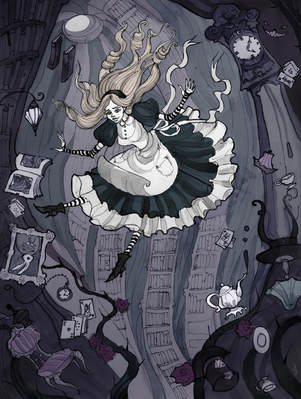Information-gathering ExpeditionI first became aware of modern fan fiction back around 2009-10, when my then pre-teen daughter began talking about alternative story lines to her favorite fantasy series Harry Potter. She had discovered a group on Tumblr that wrote fan fiction stories and discussed them. This is also when I started hearing the terms shipping and OTP as well as a ubiquitous use of fangirl, fanboy, and fandom. My daughter, an avid reader, was obsessed with fan fiction during the time. I remember her asking me if fan fiction counted toward her reading log for school. I didn't see why not. Reading is reading after all. With the winds of change pointing toward an onslaught of technology distractions, teachers and parents should be glad to see students taking an interest in any form of the written word, I thought. I also remember the puzzled look on my library coworker's face when I mentioned Harry Potter fan fiction. Her children were in their twenties and she had escaped the challenges of raising children in the age of the internet. I filled her in, knowing that it wouldn't be long before students began mentioning fan fiction stories in the library. Since then, fan fiction has been something I've been aware of, but never really paid much attention to until I was researching for last week's post about fans misinterpreting art and literature. I stumbled across a few articles about the pros and cons of fan fiction. My interest was piqued and I decided to look into the subject for this week. Birth of a Genre According to Wikipedia, fan fiction started with the Star Trek fan base back in the 1960s, with the fanzine Spockanalia. Apparently, these mags were reproduced by mimeograph and sent through the mail or sold at Sci-fi conventions for a small fee. How quaint! Most of the writers were female, fueled by the desire to introduce a less male-centered point of view into the Star Trek universe. Many of the story lines involved women in the lead, saving men, and generally performing feats of badassery. It was a great way to expand and satisfy the growing female fan base. Modern Fan Fiction Then along came the World Wide Web, kids. Suddenly, people across the world could create, submit, distribute, and consume content at the press of a button. Fandom went online and exploded. Soon came websites that offered fans the ability to contribute fan fiction content and access fan fiction archives easily. FanFiction.net was the first of such websites and it has only grown in popularity. The site is best known as the platform on which E.L. James first published Fifty Shades of Grey, an original fan fiction piece for the Twilight book series. I wanted to explore fan fiction websites a bit, just to get a feel for the user experience. In order to narrow down the field, I asked my now college-age daughter for the top three fan fiction sites from her experience. 1. FanFiction.net has a bare-bones visual aesthetic akin to that of Reddit. The results are sorted by popularity, with Harry Potter fan fiction ranking at the top with over 780k contributions! The crossover fan fiction numbers in the 43k range, the most popular crossover fandom is with Twilight (which I didn't understand until my daughter reminded me that Robert Pattinson--aka Edward, Cedric--acted in both.) Other interesting features:
2. ArchiveOfOurOwn.org (AO3.org) is another site that archives and hosts fan fiction from around the world. However, they are also dedicated to exploring, archiving, and expanding a vast array of transformative works across all creative enterprises. Transformative works are creative works about characters or settings created by fans of the original work, rather than by the original creators. Transformative worksi include but are not limited to fanfiction, real person fiction, fan vids, and graphics. AO3's aesthetic seems better organized and a bit more mature, or professional, than that of FanFiction. The archive is run by the Organization for Transformative Works (OTW), a non-profit funded by donations. The archive's general works search is sorted by most recent contribution, but users can also search by fandom or by tags using a word cloud graphic. 3. Wattpad is not just a platform for fan fiction. It also allows writers to submit original content apart from the world of fandom and offers tools for self publishing. It's an app-based global community that connects creators with consumers on the go and in real time. Content is sorted by literary category, including poetry, but also by topic, like werewolves. This site seems the most user-friendly for both readers and writers. These are just the first three sites my daughter mentioned. There are many more. Down the Rabbit Hole
Next week, I'll explore the positive and negative aspects of fan fiction for both readers and writers. For now, I have a strange desire to find out what Hermione and Severus are up to...
0 Comments
|
About meI write novels and poetry and this blog. Categories
All
Archives
January 2022
|







 RSS Feed
RSS Feed
